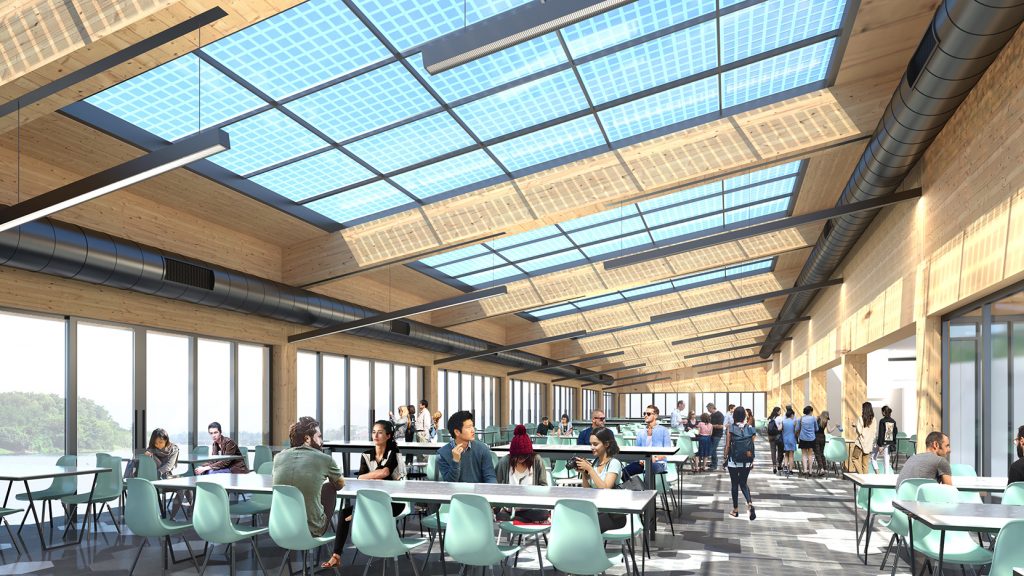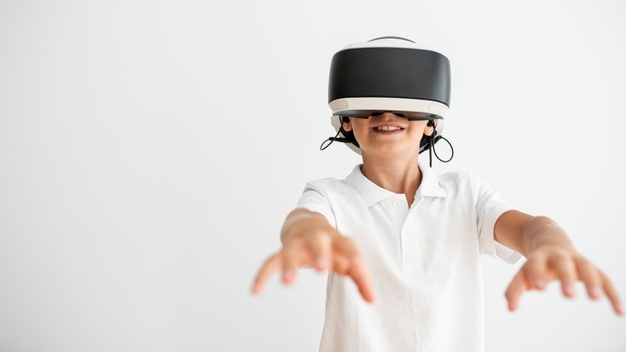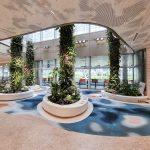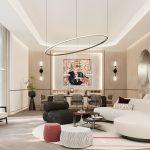12 October 2021
Sociability and digital-physical connectivity will anchor the design of future classrooms, say three design experts from RSP Singapore
- Classrooms of the new era will focus on discussion, interaction, and collaboration
- Schools should include sizable hangout spaces for social activities
- Augmented reality can give students an enhanced experience of the space
COVID-19 has changed the face of education. With the advent of 5G, the classrooms of this era will focus on discussion, interaction, and collaboration. But with so many young minds growing up in a digital era, we must design learning spaces that help students connect the digital with the real world and hone their social skills.

Cafe break
The digital space is a useful tool, and when the pandemic becomes endemic, we will likely see a full return to the classrooms with individual digital learning in place. With this, we must ensure that social spaces, especially outdoor spaces, are provided in all learning spaces. Learning should not just be centred around classrooms, laptops, and technology: to grow students holistically, we need to grow their social skills as well.
Hence, schools should include sizable hangout spaces to accommodate group discussions, as well as conducive gathering pods, pavilions within gardens, cubicle pods for virtual conferencing and more – for students to socialise, play and acquire knowledge from one another. Sports facilities, fitness corners and even running tracks linking to park connectors can also be explored to encourage users’ wellness.
RSP, for example, designs social spaces amid greenery with amenities like vending machines, water coolers and power points so that the students feel relaxed, almost like they’re going to a café with friends. This encourages free-flowing discussion and relationship-building, allowing students to create memories outside of the classroom.
With this, landscaping too cannot be neglected: with the constant usage of technology, students will need natural landscaping to relieve mental and eye strain. Furthermore, good wireless connectivity is paramount as users will need to connect to the internet and facilitate activities.

AR advantage
BIM tools let us experience spaces even before we build them. But the designing of buildings and spaces should not involve just architects: to fully allow users to enjoy the space, more experts, including software and graphic designers, should work together to give the users an immersive experience of the space.
With the help of augmented reality (AR), students can enjoy an enhanced experience of the physical space through information obtained by scanning their phones, tablets, or AR goggles. These AR tools should be designed with the learning objective in mind – if, for example, the online space is a flying simulator for an air-traffic controller student to land an aeroplane, then it should be as realistic a virtual environment as possible. These learning spaces could be used for courses that require multi-step tasks and technical skills, and which involve safety risks.
Even in the digital world, where we are not confined by gravity nor other laws of physics, we should create worlds that exist as the real world does. This not only means no columnless buildings in the sky but ensuring that online spaces adequately reflect the real landscape, with social spaces such as playgrounds, schools, and parks. This helps wire students’ brains to “learn” the connections between the two worlds.

Classrooms of tomorrow
As the pandemic continues to unfold, we can readapt existing learning spaces to complement virtual learning and create both a conducive learning and social environment. We should continue to develop the spaces outside of traditional classrooms, and harness technology to create spatial awareness in education spaces and set the stage for learning spaces of the future.

Suen Wee Kwok
Executive Director, RSP Singapore
Wee Kwok is the lead design architect of RSP and has 20 years of experience with an impressive portfolio of award-winning projects, particularly in education, mixed-use and civic typologies. He believes that architecture should lift the human spirit, connect emotionally with people, and these are reflected throughout his works.

Chew Chee Kai
Associate Director, RSP Singapore
Chee Kai has nearly two decades of experiences in various projects. His diversified portfolio covers residential, education, hospitality, offices, and retail projects. Some of his key projects include ION Orchard & The Orchard Residences, ITE Headquarters & ITE College Central @ Ang Mo Kio and Singapore Institute of Technology @ Punggol North.

Tang Kai Vern
Associate Director, RSP Singapore
Kai Vern believes that design should fundamentally be rational and functional, while appealing to emotions and senses. Architecture should delight the senses, touch the human heart, and create lasting memories. He enjoys pushing the design boundaries by exploring innovative integrated solutions across disciplines to build a new generation of design marvels.
Share




